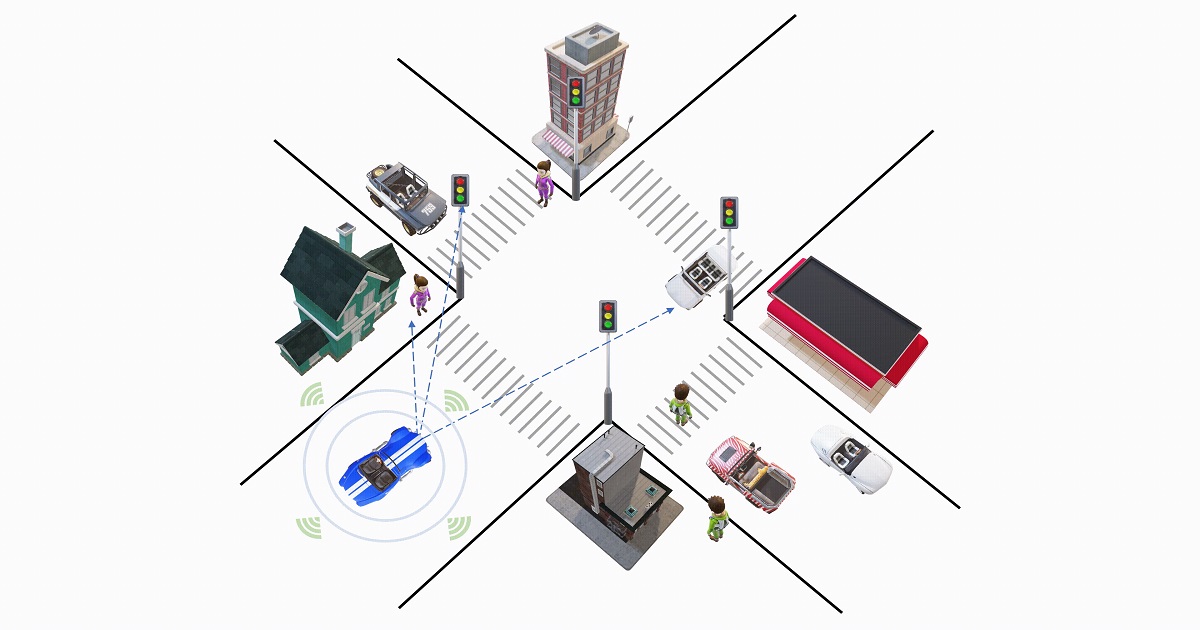Interpretable Strategies for Secure Vehicle Road Collaboration and Threat Tracing
A special issue of Journal of Sensor and Actuator Networks (ISSN 2224-2708). This special issue belongs to the section "Network Security and Privacy".
Deadline for manuscript submissions: 31 August 2025 | Viewed by 1894

Special Issue Editors
Interests: artificial intelligence security; edge computing; autonomous driving
Interests: biomedical signal processing; medical artificial intelligence technology; multimodal security
Interests: agricultural IoT; agricultural big data; agricultural equipment
Special Issues, Collections and Topics in MDPI journals
Interests: modeling, design, analysis, and optimization of wireless systems and networks; physical-layer security; permutation-based modulation/transmission; ultrareliable low-latency communications
Interests: system/hardware security; smart cards and RFID; industrial Internet-of-Things
Special Issue Information
Dear Colleagues,
As the transportation landscape evolves with advancements in technology and urbanization, the integration of vehicles into collaborative networks and the management of road traffic flow have become paramount. However, ensuring the security, reliability, and efficiency of these systems presents multifaceted Interpretable strategies are crucial for understanding the decisions made within collaborative vehicular systems, while threat-tracing mechanisms are essential for identifying and mitigating potential risks. Additionally, the accurate prediction of road traffic flow is indispensable for optimizing transportation infrastructures and enhancing user experience.
This Special Issue delves into the intersection of secure vehicle–road collaboration, interpretable strategies, threat tracing, and road traffic prediction. It aims to explore novel methodologies that enhance the transparency and reliability of collaborative vehicular systems while also addressing the imperative of forecasting road traffic flow. Submissions elucidating explainable AI techniques, safety evaluation frameworks, threat attribution models, and predictive analytics for road traffic are welcomed. This Special Issue seeks to foster a deeper understanding of these interconnected domains and advance the development of intelligent, secure, and anticipatory transportation networks.
The topics include, but are not limited to, the following:
- Explainable AI techniques for enhancing transparency in vehicular collaboration systems;
- Frameworks for safety evaluation and risk assessment in collaborative transportation networks;
- Threat-tracing mechanisms for identifying and mitigating security risks in vehicular communication;
- Predictive analytics models for road traffic flow prediction and optimization;
- Interdisciplinary approaches to integrating interpretable strategies and threat tracing in transportation security;
- Advanced machine learning algorithms for real-time threat detection in vehicular environments;
- Cross-domain studies on the impact of interpretable strategies and threat tracing on transportation infrastructure resilience;
- Ethical considerations and societal implications of implementing interpretable strategies in collaborative vehicular systems;
- Case studies and practical implementations of interpretable strategies and threat tracing in real-world transportation scenarios;
- Future directions and challenges in the development of secure and transparent vehicular collaboration systems.
Prof. Dr. Yuanfang Chen
Prof. Dr. Zhidong Zhao
Prof. Dr. Lei Shu
Dr. Yuli Yang
Prof. Dr. Gerhard Petrus Hancke
Prof. Dr. Noel Crespi
Guest Editors
Manuscript Submission Information
Manuscripts should be submitted online at www.mdpi.com by registering and logging in to this website. Once you are registered, click here to go to the submission form. Manuscripts can be submitted until the deadline. All submissions that pass pre-check are peer-reviewed. Accepted papers will be published continuously in the journal (as soon as accepted) and will be listed together on the special issue website. Research articles, review articles as well as short communications are invited. For planned papers, a title and short abstract (about 100 words) can be sent to the Editorial Office for announcement on this website.
Submitted manuscripts should not have been published previously, nor be under consideration for publication elsewhere (except conference proceedings papers). All manuscripts are thoroughly refereed through a single-blind peer-review process. A guide for authors and other relevant information for submission of manuscripts is available on the Instructions for Authors page. Journal of Sensor and Actuator Networks is an international peer-reviewed open access semimonthly journal published by MDPI.
Please visit the Instructions for Authors page before submitting a manuscript. The Article Processing Charge (APC) for publication in this open access journal is 2000 CHF (Swiss Francs). Submitted papers should be well formatted and use good English. Authors may use MDPI's English editing service prior to publication or during author revisions.
Keywords
- vehicular collaboration
- interpretable strategies
- threat tracing
- road traffic prediction
- explainable AI
- security evaluation
Benefits of Publishing in a Special Issue
- Ease of navigation: Grouping papers by topic helps scholars navigate broad scope journals more efficiently.
- Greater discoverability: Special Issues support the reach and impact of scientific research. Articles in Special Issues are more discoverable and cited more frequently.
- Expansion of research network: Special Issues facilitate connections among authors, fostering scientific collaborations.
- External promotion: Articles in Special Issues are often promoted through the journal's social media, increasing their visibility.
- e-Book format: Special Issues with more than 10 articles can be published as dedicated e-books, ensuring wide and rapid dissemination.
Further information on MDPI's Special Issue polices can be found here.










